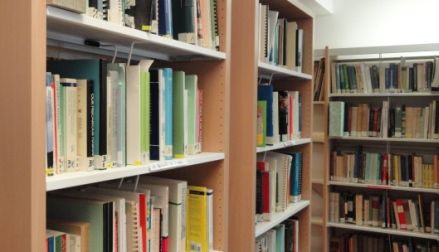| Titre : |
Plant ecology in the Middle East |
| Type de document : |
livre |
| Auteurs : |
Ahmad K. Hegazy, Auteur ; Jonathan Lovett-Doust, Auteur |
| Mention d'ÃĐdition : |
1st ed. |
| Editeur : |
Oxford, UK : Oxford University Press |
| AnnÃĐe de publication : |
2016 |
| Importance : |
339 p. |
| ISBN/ISSN/EAN : |
978-0-19-966081-0 |
| Prix : |
44.49 GBP |
| Note gÃĐnÃĐrale : |
Contient 8 p. avec 16 pl. coul.; DOI : 10.1093/acprof:oso/9780199660810.001.0001 |
| Langues : |
Anglais (eng) |
| Mots-clÃĐs : |
Plant ecology Western Asia Arid zones |
| RÃĐsumÃĐ : |
Le site ÃĐditeur indique : The Middle East is one of several global âcradles of civilization,â where people early on tamed plants and animals, domesticating a few and then living successfully off them and with them ever since. Middle Eastern plant ecology today includes the plants of primordial Gondwana and ancient Arabia felix; of Iranian âHyrcaniaâ and the land south of the Caspian Sea; and fabled plants of the Torah, Bible, and Koran. The region is generally dry and getting drier, yet it is also home to spectacular cloud forests of southern Arabia. The region has been badly neglected in terms of its overall natural history and much of this remains relatively unknown. The plant ecology is just getting under way and a book seems timely. Major dryland families and regional plant communities are described. The high frequency of facilitative interactions, where certain âhostâ species help others is noted. The book includes a âplantâs-eye-viewâ of domestication and journeys through some 24 countries, highlighting five regional biodiversity âhotspotsâ where the challenges of desertification, habitat loss, and other threats to plant biodiversity are acute. Populations of iconic long-lived tree species like the Dragonâs-blood tree, the BankoualÃĐ Palm, and beautiful Mimusops trees are all mostly made up of elderly individuals. The book explores effects of long-term climate change and the isolation of climate relicts upon the âregeneration nicheâânamely, upon the youngsters and adolescents of such species. Other chapters explore âdeep-timeâ effects, salt and halophytes, succulence and sclerophylly, specialized photosynthesis, opportunism, and âbet-hedgingâ strategies for flowering and dispersal. |
| En ligne : |
https://doi.org/10.1093/acprof:oso/9780199660810.001.0001 |
Plant ecology in the Middle East [livre] / Ahmad K. Hegazy, Auteur ; Jonathan Lovett-Doust, Auteur . - 1st ed. . - Oxford, UK : Oxford University Press, 2016 . - 339 p. ISBN : 978-0-19-966081-0 : 44.49 GBP Contient 8 p. avec 16 pl. coul.; DOI : 10.1093/acprof:oso/9780199660810.001.0001 Langues : Anglais ( eng)
| Mots-clÃĐs : |
Plant ecology Western Asia Arid zones |
| RÃĐsumÃĐ : |
Le site ÃĐditeur indique : The Middle East is one of several global âcradles of civilization,â where people early on tamed plants and animals, domesticating a few and then living successfully off them and with them ever since. Middle Eastern plant ecology today includes the plants of primordial Gondwana and ancient Arabia felix; of Iranian âHyrcaniaâ and the land south of the Caspian Sea; and fabled plants of the Torah, Bible, and Koran. The region is generally dry and getting drier, yet it is also home to spectacular cloud forests of southern Arabia. The region has been badly neglected in terms of its overall natural history and much of this remains relatively unknown. The plant ecology is just getting under way and a book seems timely. Major dryland families and regional plant communities are described. The high frequency of facilitative interactions, where certain âhostâ species help others is noted. The book includes a âplantâs-eye-viewâ of domestication and journeys through some 24 countries, highlighting five regional biodiversity âhotspotsâ where the challenges of desertification, habitat loss, and other threats to plant biodiversity are acute. Populations of iconic long-lived tree species like the Dragonâs-blood tree, the BankoualÃĐ Palm, and beautiful Mimusops trees are all mostly made up of elderly individuals. The book explores effects of long-term climate change and the isolation of climate relicts upon the âregeneration nicheâânamely, upon the youngsters and adolescents of such species. Other chapters explore âdeep-timeâ effects, salt and halophytes, succulence and sclerophylly, specialized photosynthesis, opportunism, and âbet-hedgingâ strategies for flowering and dispersal. |
| En ligne : |
https://doi.org/10.1093/acprof:oso/9780199660810.001.0001 |
|  |


 Ajouter le rÃĐsultat dans votre panier Affiner la recherche Interroger des sources externes
Ajouter le rÃĐsultat dans votre panier Affiner la recherche Interroger des sources externes




